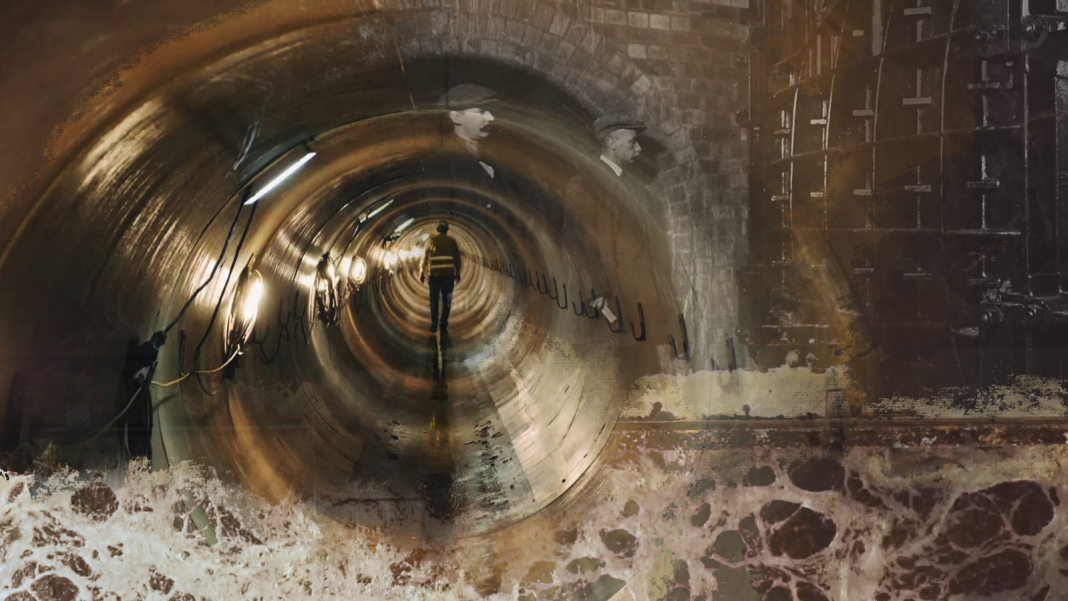If you want to understand how Britain got mired in a sewage crisis from which it may never truly escape, the best place to begin is not this year or last year, or for that matter the year England’s water industry was privatised (1989), but more than a century-and-a-half ago.
It might seem odd to begin an account of Britain’s water woes all the way back in 1856, but that, it so happens, was the year of a fateful decision – one that began us on the path we’re still treading today, with growing outrage about repeated sewage outflows into rivers and little progress in resolving it.
For it turns out that 1856 was the moment the broad structure of Britain’s (and much of the rest of the world’s) urban water systems were set in stone.
There is much that is complex about the modern water business – the financing of the companies, the regulatory structures that oversee them, the nature of water processing – but actually the real story here is surprisingly simple. It comes back to pipes, or, to be more precise, what goes down the pipes.
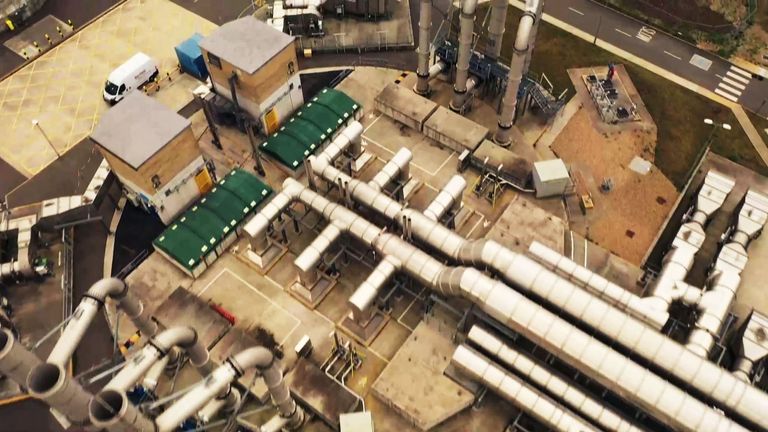
If you live in a big city like London or Glasgow, when you flush your lavatory the water goes down into the sewer. Same thing for the grey water that comes out of your sink or from the back of your washing machine.
But so too – and this is the crucial bit – does rainwater. The rain that comes off your roof or the pavement or the road also flows into the very same drains and down into the very same sewers. This – where rainwater and sewage intermingle – is what is known as a “combined sewage system”.
The biggest problem with a combined system is that every time it rains heavily the system is vulnerable to what are known as combined sewage overflows. The rain essentially overwhelms the sewage system and its pipes, and spills through an outlet into a river or the sea. These spills are supposed to be infrequent, only in the event of very heavy rain but (and it’s hard to overemphasise this) they aren’t a bug in the system – they are the system.
Please use Chrome browser for a more accessible video player
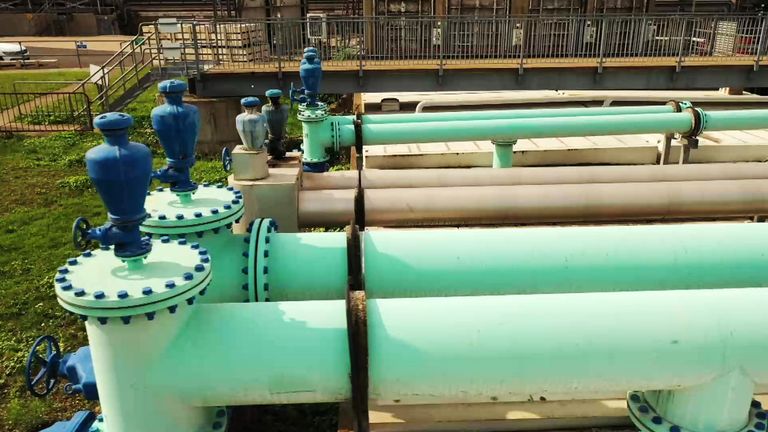
3:22
Britain’s pipe crisis revealed
With a combined system like this – in other words with pipes configured the way they are – there really would be no way of preventing 100% of all sewage spills unless you covered much of the country with sewage plants or built tunnels and storage tanks bigger than you could possibly imagine. Either that or you could allow the sewage to flow back into peoples’ homes. That’s the logic of the pipes.
Now, if you were going to design Britain’s sewage system from scratch today this is not, to put it mildly, the design you’d pick. You’d be far more likely to opt for something else – a separate system, where there is one pipe for sewage and an entirely separate pipe for rainwater.

Sewage spills at river site
There would still be challenges even with a separate system. For one thing, road water is surprisingly dirty, so allowing it to course straight into rivers is not a good idea. Even so, these days separate systems are seen as the gold standard, because they help safeguard sewage plants from being overwhelmed in the event of a downpour.
But for most of us it’s simply too late. Britain’s main urban areas all have those combined systems which “bake in” sewage spills pretty much forever. And while some in the water business say that since the 1960s all new sewage systems have been of the gold standard “separate” variety, as we’ll see in a moment the reality is considerably more murky.
But here’s the thing. In a parallel universe we might never have had this combined system at all. Sewage overflows might have been a pipe dream.
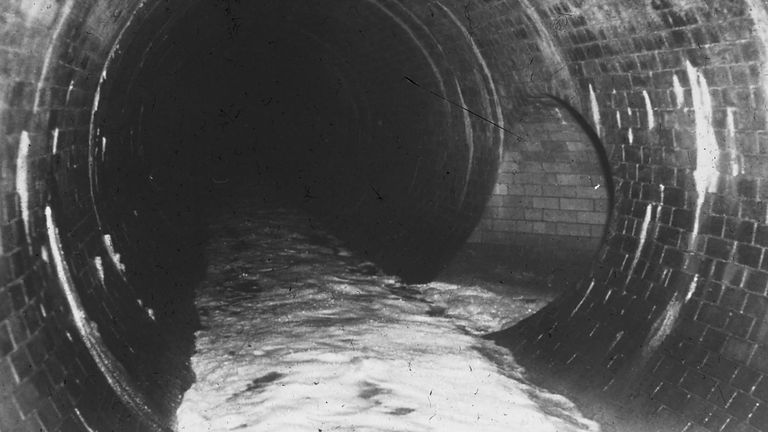
Sewer in Eltham, southeast London. Pic: Thames Water
Which brings us back to that fateful decision in 1856 – a decision taken in the face of what later became known as ‘The Great Stink’.
Victorian London had been struggling with an ever-worsening sewage problem. There had been repeated cholera outbreaks – most notably the epidemic of 1848, which resulted in tens of thousands of deaths. Social reformers like Sir Edwin Chadwick campaigned for change, urging the authorities to clean up the city, but things seemed to be going from bad to worse.
As Stephen Halliday has documented in his definitive study, The Great Stink, the advent of the water closet had the perverse effect of dramatically increasing the amount of liquid going into the primitive sewage systems of the era.

Beckton’s construction in the 1800s. Pic: Thames Water
There was no conception of sewage treatment as we’d see it today. In practice, ever-increasing amounts of sewage were being flushed into the Thames and its tributaries. And the more sewage went into the river, the more it stank and, even more importantly, the more people got sick – because most households’ drinking water came from the very same river.
Eventually the authorities convened a series of inquiries, the first of which was led by Chadwick. His vision for London’s sewage system was not dissimilar from that separate system people are still fantasising about today: sewage would go down one pipe while rainwater went down another. Eventually that sewage would be processed and turned into manure, which could be used as a fertiliser.
And so, for a brief period in the mid-19th century there was a tantalising moment when it looked as if London would end up with a separate sewage system. Indeed, Chadwick was hardly the only person advocating it: other engineers came forward with detailed plans to create separate pipes for sewage and others for rainwater. But in the event, the commissioners ended up choosing a different design – the one advocated by Sir Joseph Bazalgette.
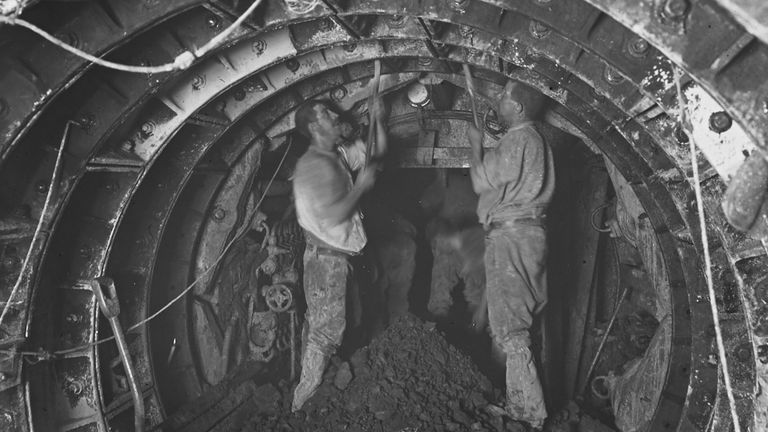
Sewer construction in southwest London. Pic: Thames Water
Bazalgette was a civil engineer who had been appointed chief engineer to the Metropolitan Board of Works. His solution to the Great Stink, which became so unbearable that in 1858 the Houses of Parliament had to be abandoned, was the sewage system we have today.
London’s home pipes and drains – carrying both sewage and rainwater – would all empty into a series of sewers running along the embankment next to the Thames and taking them east of the city, where the waste would collect before being emptied into the Thames, to flow out in the tide to the North Sea. So was born the sewage systems most of us use today.
And where London led, everyone else followed. Every other major town and city in the country introduced similar combined sewage systems – not to mention many cities and regions in Europe and North America. Bazalgette’s fateful decision, to choose the combined system and ignore the protestations of people like Chadwick, changed the world forever.
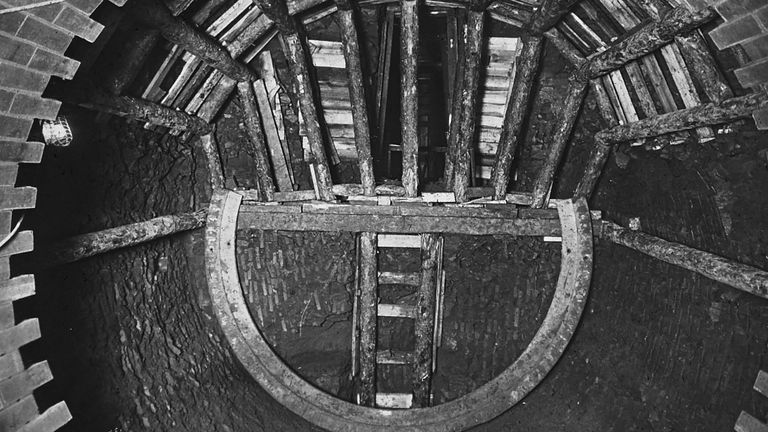
Sewer being constructed
Now, Bazalgette’s sewers, and the other public works he helped build, are rightly recognised as extraordinary achievements. By helping channel muck out of the city, they prevented future cholera outbreaks. He and his pipes saved countless lives.
Moreover, they have stood the test of time. London’s sewage still passes through the same brick and concrete tunnels laid down by Bazalgette and his engineers more than a century and a half ago. His system, designed when the city had a population of around two million, is now being used by a population of nearly nine million. It is a marvel.
But it is nonetheless a combined system, designed from the start to discharge sewage into the river in the event of heavy rainfall. And as the population has grown and the square mileage of Britain’s cities expanded, with ever more concrete and asphalt surfaces channelling ever more rain into the drains, those discharges have become more and more frequent.
Back in Bazalgette’s lifetime London’s system was supposed to discharge for around 12 days a year, during the heaviest rain storms. Today there are more than 60 days a year.
And that’s the most important thing you need to know about Britain’s sewage system. The first big problem is, well, the system. We chose the wrong one.

Storm relief worker inside Charlton sewer, southeast London. Pic: Thames Water
But if that were the only problem then it would, perhaps, be forgivable. But unfortunately it’s just the start of it, because, that fateful choice has been compounded by decades of underinvestment.
It’s a catalogue of issues. First, governments cut back on public investment in the late 1970s and 1980s (a reaction in part to Britain’s International Monetary Fund bailout and in part a choice of Margaret Thatcher’s government). By the 1980s, England was perilously close to failing a set of European directives on water quality and sewerage systems (one of which outlawed dumping sludge into the sea, which we still did up until the late 1990s). So the system was privatised.
“The idea,” says Sir Dieter Helm, an Oxford economist and one of the country’s leading experts on its infrastructure, “was that we needed a massive investment in water from 1990 onwards and the government wasn’t going to pay for it – therefore the private sector should borrow the money to invest to renew the infrastructure for water.
“Balance sheets would be set up – clean balance sheets with nothing on them (indeed [the companies] were given £1bn) – and those balance sheets would be used to invest.
“But the balance sheets were not used for that purpose. They were used for one of the largest exercises in financial engineering the economy has seen.

Sewage spill at river site
“What effectively, the new owners of the companies did was to say, look, we can mortgage these assets? But then they distributed [the proceeds] in the form of dividends to shareholders.
“So here we are, 30-something years later, and no new reservoirs have been built, no new resources are in place, and frankly, the state of the sewers is not fit for purpose.”
The scale of the problem is only gradually coming to light.
The reality of pollution is alarming
Let’s start with sewage. If they were working as they were supposed to, combined sewage systems should only be discharging loads into watercourses very infrequently – when it rains very heavily indeed. And when discharges happen, they are supposed to be very dilute, since the sewage is coming out alongside gallons of rainwater.
But this is not what is happening. Across much of England and Wales, many overflows are discharging sewage even on the driest days.
Assessing precisely how often this is happening is a tricky job. While water companies in England and Wales are producing more data than ever before (and, it’s worth saying, more than in most other countries, including Scotland, which has only a tiny fraction of this data available) on their outflows, the numbers are not 100% reliable. Indeed, the Environment Agency says only 82% of the pollution reports came from the water companies – the rest came from EA monitoring or public activists.
Tempting as it is to assume most of these pollution incidents are the fruit of a bad actor – someone in a control room somewhere pressing a button to unleash sewage on a river or a shore – the reality is more prosaic but, possibly, more alarming.
Most sewage overflows are simply tunnels connected to weirs or walls, over which the water flows when it can’t go down the “normal” pipes. In other words, they are manifestations of a system that can’t cope. Sometimes it’s because the pipes have been blocked by rubbish or the nightmare of all sewage workers – a ‘fatberg’. Sometimes it’s because a pumping station is overwhelmed or a wastewater treatment plant cannot process enough liquid.
Either way, this happens far more regularly than it should, which suggests that many parts of the system – the pipes, the pumping stations, the treatment plants – are ill-equipped for the flow of sewage and rain coming through the system.

More sewage spills
To put it another way, the problem isn’t that water companies are taking a discretionary choice to spill sewage. The problem is that they are not in control of their systems. Actually, it’s worse than that: they may not altogether understand their systems.
Here’s a small but telling example, which comes back to that issue we began with: the difference between those old Victorian combined sewage systems and the separate systems we really ought to have installed. The conventional wisdom in water circles is that we stopped building combined sewage systems years ago – and that all new sewage systems built since the 1960s are separate systems.
The distinction is, as you’ll know if you’ve got this far, pretty important. Combined systems essentially guarantee sewage spills; separate systems should be protected from them. But as we travelled the country, visiting some of these pipes we were reporting on, we struggled to find any of these “gold standard” sewage systems in the UK.
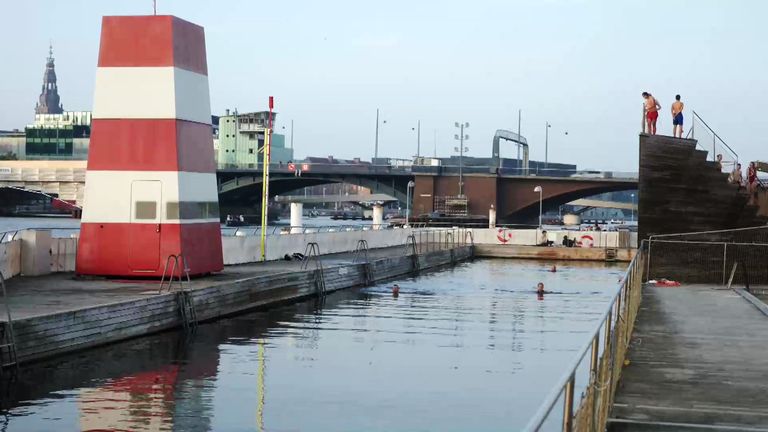
Copenhagen Harbour
We visited Denmark, where in one new development in Copenhagen they aren’t just separating out rainwater from sewage, but are separating roof water from road water in a “triple separated system”. Yet we failed to pinpoint even a plain two-pipe separated system in the UK.
This was doubly odd because the water companies’ lobby group, Water UK, told us that of the 576,734km (358,365 miles) of sewers in England and Wales, only 96,193km (59,771 miles) or 17% is combined sewer. The rest, they said, was separate sewers. On paper, the UK’s water system was totally different from the Victorian model decided upon by Bazalgette in 1856.
But then things got a little more murky. Another statement from the Environment Agency suggested that combined sewers actually accounted for 30% of all sewers; another from the European Union put the figure at a whopping 70% of all sewers. No one seemed to be able to agree – and no one was able to tell us how many homes had one or the other system. It was one slightly meaningless statistic after another. When we eventually asked Water UK to help us find some of these brilliant modern sewage systems, things got odder still.

Copenhagen’s treatment plant with separate pipes
They told us that there were many towns with entirely separate sewage systems, including Milton Keynes, Peterborough, Warrington and Telford. But when we examined the Environment Agency data, it showed all of these towns had the very overflows you are only supposed to find in combined systems – those nasty pipes spilling sewage into rivers when it pours with rain (and sometimes when it doesn’t).
When we asked Anglian Water whether Milton Keynes had a combined sewage system, they pointed us towards a map showing that while there were two overflows in the outskirts of the town, most of the urban area was indeed a separate system. But it is a rare exception.
Indeed, the more we delved, the more apparent it became that, far from modernising the structure of our sewage system in the years since Bazalgette, we’ve effectively doubled down on the old system.
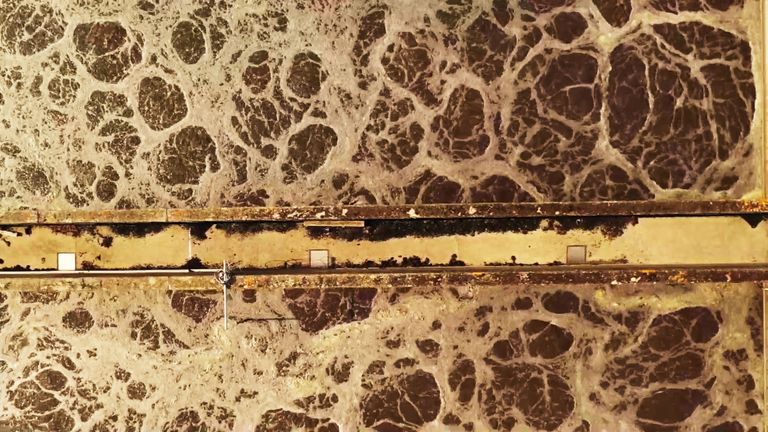
Water being treated inside Beckton plant
While developers are supposed these days to lay separate pipes in new homes and buildings for rain and for sewage, in practice the vast majority of them simply point them towards the same place, the big combined trunk sewer in the street. In other words while the headline statistics suggest Britain’s sewage system is mostly separate, in practice precisely the opposite is likely to be the case.
Regulator, companies and politicians all to blame
While it’s easy to blame the water companies, this is a knotty issue that also comes back to the way we manage and regulate property development in this country. It comes back to the fact that our urban spaces have evolved over hundreds and, sometimes, thousands of years. Planning laws essentially give any developer an automatic right to connect their drains to the main sewer – though they are sometimes gently encouraged to let rainwater drain elsewhere. All told, it’s a bit of a mess.
But, even more worryingly, the more we researched, the more we realised that thanks to these factors and others, the water system might well be as much of a mystery to the water companies themselves as it was to us. Indeed, it turns out there is, at present, no map of the sewage system, no definitive record of where the pipes are, where they go and what they carry. In much the same way as no-one wants to think about what happens when they flush the loo, for decades our water authorities were happy not to spend too much time thinking forensically about what was happening beneath the surface.
Please use Chrome browser for a more accessible video player
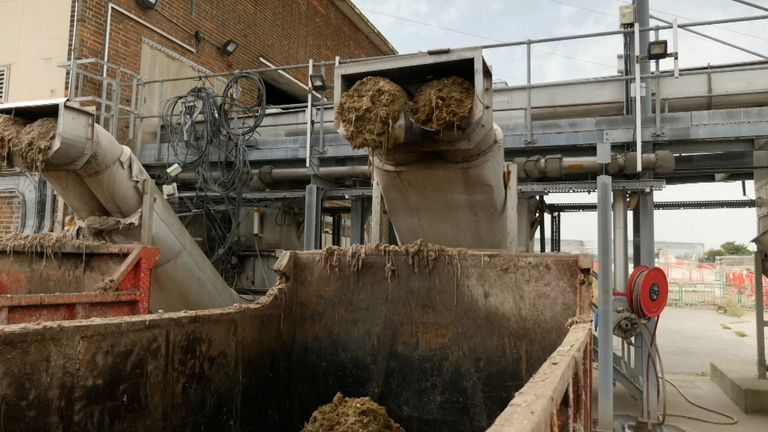
2:03
How does poo turn to power?
And while it’s fashionable these days to declare that Britain is an outlier, in practice it’s much the same across most of Europe, which mostly has similar combined sewage systems. The main difference is that most of these countries haven’t yet begun to collect data about sewage outflows.
According to Caroline Whalley of the European Environment Agency, “it’s a widespread problem. A lot of the time people don’t even know where [the sewage outflows] are. The first challenge is to map and find out where they are.”
On this front Britain, rudimentary and unreliable as it data might be, seems to be slightly ahead of most European countries.
It’s easy to blame this all on the companies. And they deserve scrutiny for all sorts of reasons, among them the way they’ve run their finances. In some cases – Thames Water being a prime example – previous investors racked up large debts and withdrew money from the business. Rather than pouring in large amounts of capital investment, they geared them up, leaving them perilously reliant on capital from outside investors.
Read more from Sky News:
The rush to dig enough minerals to combat climate change
Likely cause of biggest earthquake on Mars revealed
Bat genes help find cancer and COVID treatments
But the blame ought to be shared out more widely. The water regulator, Ofwat, was too slow to police these problems, too willing to allow companies to keep their investment levels flat. Successive governments were too fixated on keeping water bills down to try to intervene and encourage a rise in spending on the system. The Environment Agency was too slow to diagnose the problems with sewage overflows, to the extent that citizen environmentalists are now doing much of the extra work, monitoring their local rivers in the absence of anyone else.
And all of this is before we’ve even touched on the other crucial job done by water companies – not merely taking away customers’ dirty water but delivering clean water to their homes and businesses. This year England got lucky: there was plenty of rain and no water shortage. But it is still more than three decades since the last new reservoir was built.
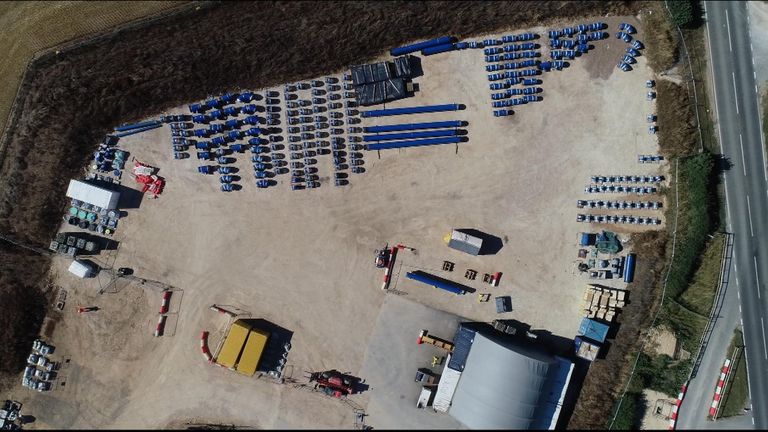
Anglian Water pipe construction site
Now, in fairness, this oft-repeated nugget is slightly less damning than it sounds: actually quite a lot of new reservoir capacity has come online in recent years, but much of this has been reservoir extensions and, in some cases, the conversion of existing quarries into water storage. Even so, as the climate warms there is a risk of more dry periods for certain regions of the country – especially the south and east.
Here, again, there is a legacy of underinvestment. There has been talk for decades, for instance, about plans to create a national grid for water. Given many of the UK’s more northern and western regions have more water than they need, there is some logic to this. But the country’s water systems remain disconnected.
There are rays of hope. Anglian Water is in the middle of constructing a water grid covering hundreds of miles around the east of England. In London, the new Tideway tunnel promises to capture 95% of all overflows running into the Thames (though, since as you know this is a combined system, there is no escaping the occasional discharge). The government says it has a new plan which will encourage water companies to spend more on their sewage systems.
But all of these schemes will cost money – serious sums of money. Tot up the amount needed to modernise both sewage and water provision and it comes to around £100bn – about the amount HS2 was expected to cost before half of it was cancelled.
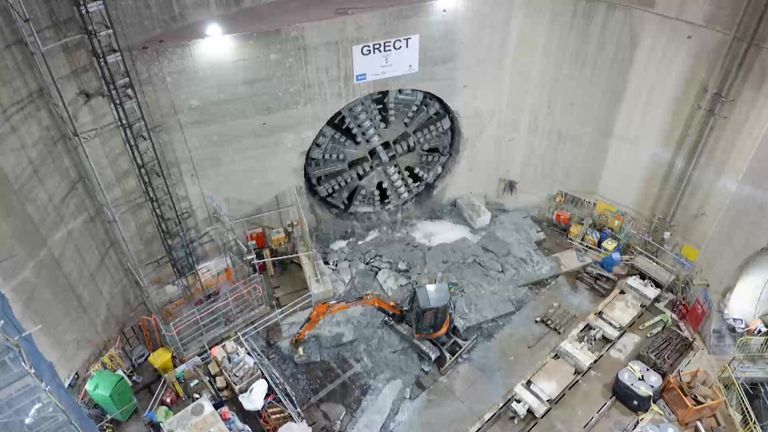
Construction of the Tideway Tunnel in London
That implies higher bills off into the future. Are those higher bills a price customers will feel is worth paying? Or will their discontent with the water system only increase in the years to come?
Environment Secretary Therese Coffey, who describes the repeated episodes of illegal sewage outflows as a “scandal”, says she doesn’t decide bill levels but signals that consumers may need to be prepared to pay for an improved system.
“Any increase in bills can only be for new investment – not about things that should have been done in the past,” she says. “There’s not a case that people should have to pay twice.”
And, before you ask, replacing the existing combined system – that Bazalgette model – with a separate system of two pipes (one for sewage, another for rainwater) would be astoundingly, crazily expensive. One estimate puts the figure at somewhere between £350bn and £600bn, which would make it the biggest infrastructure investment in history. It would involve digging up every road in the country, not to mention persuading every home to replumb their drains and gutters. So, this is not going to happen.
But that brings with it a profound lesson, which is not widely appreciated: there is no way we will ever be able to eliminate 100% of all sewage overflows.
When it rains very heavily, a combined system will always need to allow some of that sewage into rivers. This is just the way the system we have works.


